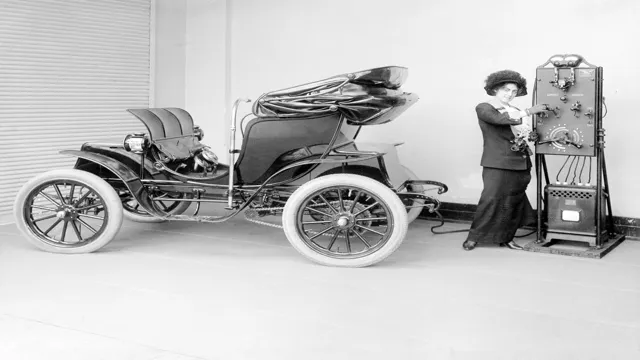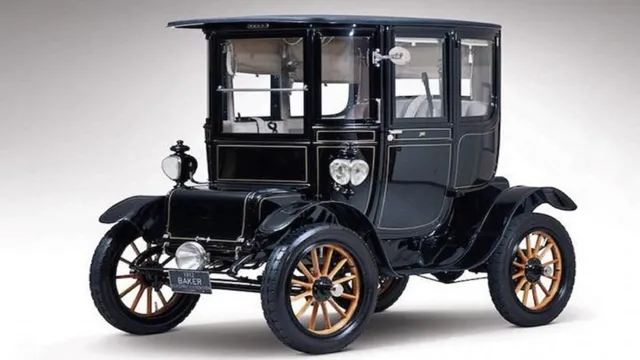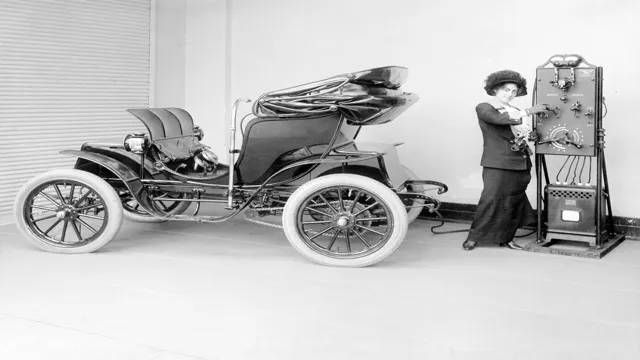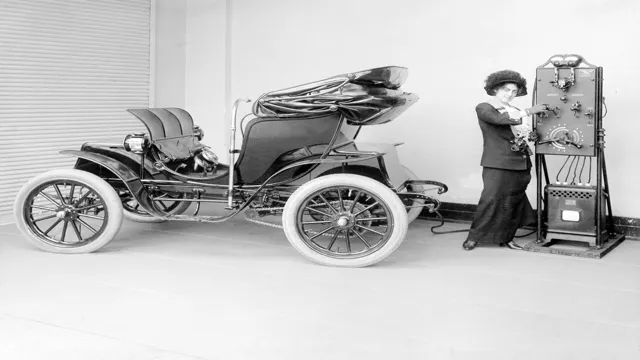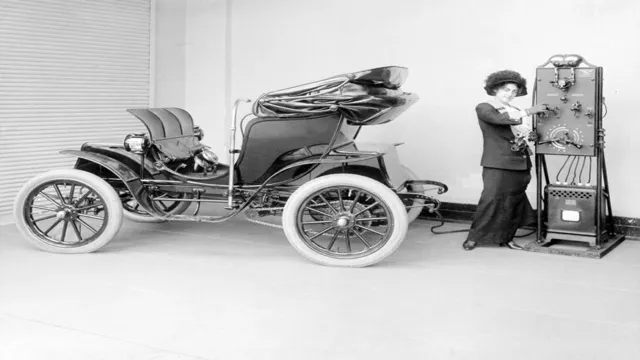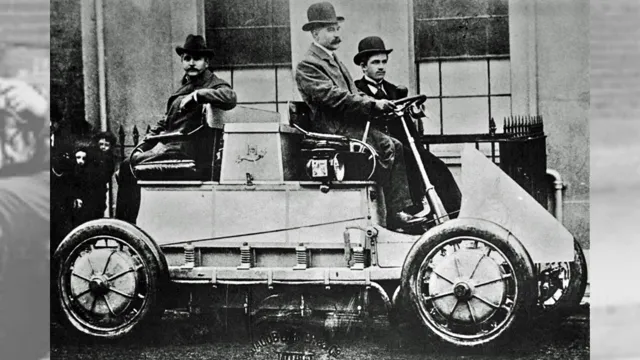Revolutionizing the Roads: A Look into the Fascinating History of Electric Car Motors
Electric cars are becoming increasingly popular as people search for more sustainable and environmentally friendly forms of transportation. While this may seem like a new trend, the history of electric car motors dates back more than a century. Electric motors actually powered some of the earliest cars in the late 1800s, and they were greatly improved upon in the early 1900s.
However, due to various factors such as the discovery of cheap oil and improvements in gasoline engines, electric cars fell out of favor and were largely forgotten for many years. In recent times, with the devastating effects of climate change becoming more and more evident, the need for sustainable transportation options has become more important than ever. This has led to a resurgence of interest in electric cars and electric car motors.
Today, electric motors are more advanced than ever before, and they are powering some of the most impressive cars on the market. The technology behind electric car motors is constantly improving, and today’s electric motors are more efficient, more powerful, and more sustainable than ever before. If you are interested in the history of electric car motors, you might be surprised at just how far back their roots go.
From early prototypes to the electric cars of today, the history of electric car motors is a fascinating journey through time. As we continue to look for more sustainable forms of transportation, it is likely that electric car motors will play an increasingly important role in our lives. So take a journey with us and learn about the fascinating history of electric car motors.
Introduction
Electric car motor history is a fascinating subject with roots that date back over 150 years. In the mid-1800s, early versions of electric motors were developed for use in various industrial applications. However, it wasn’t until the 1890s that electric motors were utilized in a more dynamic way, with the development of electric vehicles.
One of the early pioneers in this field was Thomas Parker, who created the first practical production electric vehicle in 188 Over the next few decades, electric cars grew in popularity, with companies like Baker Electric, Columbia Electric, and Detroit Electric leading the way. However, the emergence of gasoline-powered cars eventually led to the decline of electric vehicles, and the electric car motor took a back seat for many years.
Fast forward to the present day, and electric cars are once again gaining popularity, with advancements in battery technology allowing for longer ranges and faster charging times. The electric car motor has come a long way since its inception, and it will be exciting to see what the future holds for this innovative technology.
What are Electric Car Motors
Electric Car Motors Electric car motors are the heart and soul of electric vehicles. Basically, an electric motor uses magnetic fields to produce mechanical energy that drives the wheels. It’s a very efficient and quiet technology that’s environmentally-friendly, thanks to zero-emission.
Electric car motors feature a permanent magnet, which goes around an electromagnet. With the use of an electric current, the electromagnet produces a magnetic field that interacts with the permanent magnet. The interaction facilitates the turning of the rotor, which is attached to the drive shaft.
One of the many benefits of electric car motors is the instantaneous torque they generate. Unlike their gasoline counterpart, which takes a while to “rev up,” an electric motor provides full torque as soon as the accelerator pedal is pressed. As a result, electric vehicles can accelerate quickly and achieve high top speeds.
Moreover, since electric car motors don’t need a transmission to change gears, they produce a seamless driving experience. Another benefit of electric car motors is that they require much less maintenance than gas engines. This is because electric motors have very few moving parts, so there’s less wear and tear.
Also, electric motors don’t have the same temperature issues as combustion engines, which means there’s no need for an oil change, radiator flush, or timing belt replacement. In conclusion, electric car motors are an innovative technology that is changing the future of the transportation industry. They provide a cleaner, more efficient, and powerful alternative to traditional gas engines.
Moreover, they require little maintenance, which makes them a cost-effective solution for everyone.
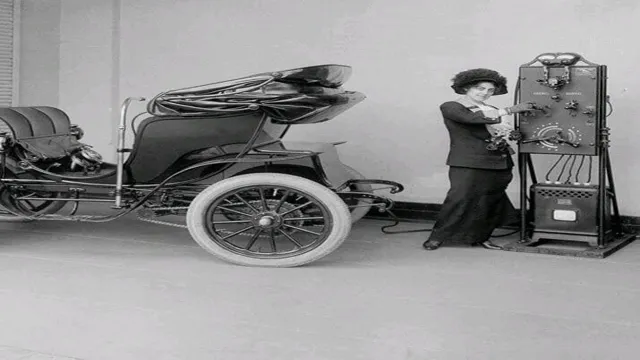
Early Days of Electric Car Motors
Electric car motors have come a long way since their early days, which date back to the late 19th century. The first electric cars were powered by DC motors, which were bulky and heavy. However, they had one advantage over internal combustion engines – they were quiet, smooth, and emitted no pollution.
As electric cars gained popularity, manufacturers began to experiment with different types of motors, including AC motors, which were more efficient and powerful. Today, electric car motors are highly advanced, incorporating advanced technologies like regenerative braking and variable-frequency drives. They are powerful, efficient, and can propel electric cars to phenomenal speeds in mere seconds.
With the rise of electric cars, more and more people are recognizing the benefits of electric car motors, including reduced emissions, lower operating costs, and a quieter ride.
The Rise of AC Motors
Electric cars have come a long way over the years, and much of that progress can be attributed to the development of AC motors. While DC motors were once the go-to option for electric vehicles, AC motors have proven to be more efficient and reliable. This shift began in the early 2000s, when Tesla Motors unveiled their first electric car with an AC motor.
Since then, many other automakers have followed suit, using AC motors to power their electric vehicles. The rise of AC motors can be traced back to their ability to provide more power and torque at lower speeds, ultimately improving acceleration and performance. This development has made electric cars more practical and appealing to consumers, paving the way for a cleaner, more sustainable future.
Discovery of AC Motors
The discovery of AC motors revolutionized the world of electricity and power transmission. Nikola Tesla and George Westinghouse played instrumental roles in bringing the AC motor to the forefront, advocating for its use over their competitor, the DC motor. With the ability to transmit electricity over long distances, the AC motor created the foundation for modern power grids and made electricity accessible to the masses.
The rise of AC motors led to a transformation in industry and consumer products, allowing for more efficient machinery and appliances. Today, AC motors can be found in everything from household appliances to industrial machinery, and continue to be a driving force in technological advancements.
Advantages of AC Motors
AC motors have become increasingly popular in recent years, replacing DC motors in many industrial and commercial applications. AC motors provide numerous advantages over DC motors, including energy efficiency, lower maintenance costs, and enhanced reliability. There are several reasons for the rise of AC motors, such as advancements in technology, increased demand for energy-efficient motors, and the availability of variable speed drives.
With their superior performance and increased functionality, AC motors have become the preferred choice for many industries, including manufacturing, HVAC, and automotive. As businesses strive to reduce their carbon footprint and improve their bottom line, the advantages of AC motors over DC motors have made them a top choice for powering various types of machinery and equipment.
Spread of AC Motors
The surge in popularity of AC motors has been revolutionary in the industrial world. These powerful motors are praised for their high efficiency, low maintenance costs, and advanced control features. Their ability to generate rotational force from electrical energy has made them an essential component in various industrial applications.
The development of AC motors started in the late nineteenth century, but it wasn’t until the advent of solid-state electronics that they became more widespread. Today, AC motors are everywhere – from small household appliances to heavy-duty industrial equipment. Their prevalence can be attributed to their ability to adapt to different loads and speeds, making them versatile and reliable.
This has made them the preferred choice over DC motors in many cases. It’s anticipated that the use of AC motors will only continue to grow as new technologies emerge, making them even more efficient and cost-effective.
DC Motors and the Battle for Dominance
The history of electric car motor technology has been marked by a fierce rivalry between two types of motors: AC (alternating current) and DC (direct current). While AC motors have been touted for their efficiency and power, DC motors have been praised for their simplicity and durability. Early electric cars were equipped with DC motors, which were cheap and readily available at the time.
However, as technology advanced, AC motors became more popular due to their superior performance. Today, most modern electric cars use AC motors, but there are still some advocates for DC motors. DC motors are less complex and easier to repair, making them a popular choice for DIY electric car enthusiasts.
Ultimately, the choice between AC and DC motors comes down to a matter of personal preference and the specific application for which the motor will be used.
Introduction of DC Motors
DC Motors DC motors, or direct current motors, have been in use for over a century. These motors convert electrical energy into mechanical energy and are commonly used in a range of small and large devices, from electric shavers to industrial machinery. The battle for dominance between DC and AC motors has been going on since the technologies were first introduced.
While AC motors are easier to manufacture and maintain, DC motors offer greater control and precision. This has led to their continued use in applications where precise control is necessary, such as robotics and aerospace. With the rise of renewable energy, DC motors have also been gaining popularity in wind turbines and solar panels, where their ability to convert electricity efficiently is highly valued.
Despite the competition from AC motors, it looks like DC motors are here to stay.
DC Motors vs. AC Motors
When it comes to motors, the age-old battle between DC and AC motors is one that has been raging for decades. Each has its own unique advantages and disadvantages, and choosing between the two can be a confusing decision. DC motors rely on direct current and are known for their ability to provide high torque at low speeds, making them ideal for applications such as robotics and electric vehicles.
On the other hand, AC motors run on alternating current and are often preferred for industrial applications due to their ability to run at constant speeds. While both types of motors have their strengths and weaknesses, ultimately the decision comes down to the specific needs of the application. So whether you’re building a robot or powering a factory, understanding the pros and cons of DC and AC motors is essential for making the right choice for your needs.
Recent Developments and Future of Electric Car Motors
The history of electric car motors stretches back to the early 1800s, when inventors like Thomas Davenport and Robert Anderson experimented with rudimentary electric propulsion systems. However, it wasn’t until the 20th century that electric cars gained traction, thanks to advances in battery technology and the development of electric motors that were compact and efficient enough to power a vehicle. In the 1970s, oil crises spurred interest in electric vehicles, but they remained a niche product until recently.
Today, electric cars are making major strides in the automotive industry, and motor development is a key factor in their success. New technologies like permanent magnet electric motors, which are lighter and more efficient than traditional AC motors, are revolutionizing the industry. Additionally, the rise of electric sports cars and high-performance vehicles is driving innovation in motor design, with new materials and cutting-edge engineering techniques being used to maximize power and range.
As the demand for sustainable vehicles continues to grow, the future of electric car motors is looking brighter than ever.
Conclusion
In conclusion, the history of electric car motors is a testament to human ingenuity and innovation. From the humble beginnings of early battery-powered cars in the 19th century to the sleek and sophisticated models we see on the roads today, electric motors have come a long way. While it may have taken some time for them to catch on, it’s clear that electric cars and their motors are the way of the future.
As we continue to push towards more sustainable transportation options, it’s exciting to think about what advancements we’ll see in the world of electric car motors in the years to come. Who knows? Maybe someday we’ll even see electric flying cars zooming through the skies. One thing’s for sure though, with electric cars, the future is bright, and the motor is even brighter.
“
FAQs
What is the history of electric car motors?
The history of electric car motors dates back to the 1830s when the first electric motor was invented. However, it wasn’t until the late 1800s that electric cars became more common due to advancements in battery technology.
How does an electric car motor work?
Electric car motors work by converting electrical energy into mechanical energy, which rotates the wheels of the car. The electric motor receives power from the battery, which is recharged with an external power source.
What are the benefits of using an electric car motor?
There are several benefits of using an electric car motor, including lower emissions, reduced dependence on fossil fuels, and lower operating costs. Additionally, electric motors are more energy-efficient and require less maintenance than traditional gasoline engines.
How has electric car motor technology improved over time?
Electric car motor technology has improved significantly over the past few decades, with advancements in battery technology, motor design, and power electronics. These improvements have made electric cars more efficient, more powerful, and more affordable for consumers.

